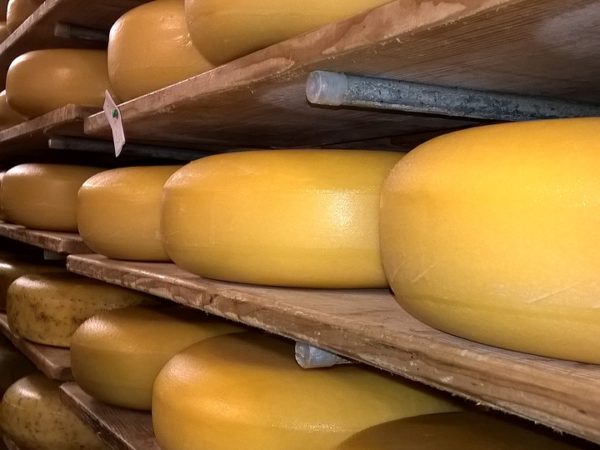
Cheese Grottos and Caves
Properly storing fine cheese is like storing fine wine. If you take proper care and keep the right conditions, you end up with a product that comes out better than it goes in. On the other hand, if you don’t do it properly, you can spoil some fine delicacies. In the commercial cheese industry, larger scale cheese caves are used to properly condition and age cheese. For the home connoisseur, cheese grottos are a space and cost effective way to age fine cheeses.
A cheese grotto is best compared to a humidor. It creates a specific microclimate for your favorite products to store them and age them in optimal conditions.
Cheese grottos also essentially eliminate the need to wrap and store cheese as you typically might within your fridge. They also allow individual types of cheese to maintain their own ambience and beneficial bacteria that enhance the cheese. Cheeses in these environments have a much longer shelf life and retain their special flavor and texture profiles.

What conditions do cheese grottos need?
The ideal internal environment of your cheese grotto will vary depending on the types of cheese you plan on storing. For many cheeses kept in wedge form, 70-75% relative humidity is appropriate. The ideal temperature depends on whether you plan on storing cheese long or short term. For long term storage, we suggest aiming for about 39℉. However, most cheese is safe to keep at 70℉ or under (room temperature) for up to a week. With many harder cheeses, like parmesan, it’s best to set the cheese out to warm slightly before enjoying it.
However, if your aim is to ‘ripen’ your cheese, 80-90% relative humidity will do the trick.
How to Use The iMatrix System to Monitor Your Cheese Grotto
The iMatrix sensor is uniquely suited to monitoring cheese grottos and cheese caves. Because it has a wide range of temperature and humidity reading ability, it can monitor all the conditions you need to store your cheese. The iMatrix system can keep your humidity in check as it monitors relative humidity from 0% all the way to a fully saturated 100%. Not only that, it can read temperatures far beyond what you might expect to keep your cheese grotto in. Needless to say, it’s no problem for the sensor keep your cheese under 70℉ or around 39℉.
Here’s the part that avid cheese connoisseurs really love: you can set the optimal ranges you want to keep your cheese in. If you want to know the very second your cheese grotto goes above 39℉ or reaches 90% humidity, the sensors will alert you.
Related:
What is the proper humidity for ripening cheese?
To ripen cheese means to store it in conditions that enhance the flavor and texture of the cheese. Most cheeses are best ripened at 80 to 90% humidity. However, the timeline of ripening is the biggest difference when it comes to ripening different kinds of cheeses. Some can take more than two years, while others take only a few weeks.
Unlike some bulky monitoring systems, the Neo takes up very little space, so you can keep storing as much as your grotto will hold. We offer the Neo in both wired and wireless options for cheese grottos, so you can choose the kind of connection that’s best for your set up. The IP65 waterproof shell can hold up to even the highest humidity, without any degradation to the sensor.
Key features:
- Ideal temperature and humidity range for storing cheeses
- Can also be used during the ripening process
- Reads conditions minute by minute
- Stores up to a month of logs or automatically uploads to the iMatrix Cloud
- See real time conditions on the iMatrix app
- IP65 waterproofing protects the sensor in wet, humid environments
- Small and compact
- Connects to a wireless gateway up to 100 meters away
- Self powered with battery life that lasts up to 3 years
- Alerts you when it detects improper conditions
- Ideal for cheese grottos and caves of all sizes